 8x 40' episodes 8x 40' episodes(Aired: May 7 - 10, 2024)
Li Juan 李娟 in conversation (Chinese) in 2023
Teng Congcong 滕丛丛 Director and screenwriter, with screenwriter Peng Yining 彭奕宁
He has played in movies, such as Creation of the Gods Ⅰ: Kingdom of Storms (2023) and Pegasus 2 (Feb.2024) Zhou Yiran also played the main role in the thriller mystery drama Regeneration (aired May 6 - 15, 2024) Ma Yili was main lead in Blossoms Shanghai, the 2023 Republican era drama (30 episodes, aired Dec 27, 2023 - Jan 9, 2024) directed by Wong Kar Wai, that still is not availiable with English subtitles (wondering why it got an English title, then...) The character Sulitan in the play was originally named Selik in the first version of the script, which means "partner" in Kazakh. Later, at the suggestion of the actor Alimujiang, it was finally changed to Sulitan, which means "commander" and "general". In his opinion, this is more in line with the father's image positioning. (Baidu) | TO THE WONDER
1. GENERAL INFORMATIONOriginal Title : 《我的阿勒泰》(Wo De A Le Tai /My Altay) English title : To The Wonderproduced by CCTV and iQiyi ; jointly produced by Ruyi Pictures, Tacheng Pictures, Wanda Pictures, and Huacheng Publishing House. Directed by : Teng Congcong 滕丛丛 Art Director: Li Jia Ning 李佳宁 director of photography : Liu Yizeng 刘懿增 sound director : Zhang Nan 张楠 composer : Gao Xiaoyang 高小阳 chief producer : Qi Kang 齐康, general manager of iQiyi Canran Studio 爱奇艺灿然工作室 Screenwriters : Teng Congcong and Peng Yining 彭奕宁 adapted from the autobiographical essays of Li Juan 李娟. Starring (see character posters galleries below):with special appearances by
Huang Xiaojuan 黄晓娟 (as Nainai, Grandmother) Alimujiang Tolsbaek /Tursunbeike 阿力木江·吐鲁逊拜克 (as Sulitan) Alima Mayutian 阿丽玛 (as Tokan) Hairati Hamu 海拉提·哈木 (as Aybek, village chief) Ayla Gureti 阿依拉·居热提 (as Kulan, Tokan's friend) Badma 巴德玛 (as Bugassenden, Chao Ge's grandma and female chief of a Mongol tribe) 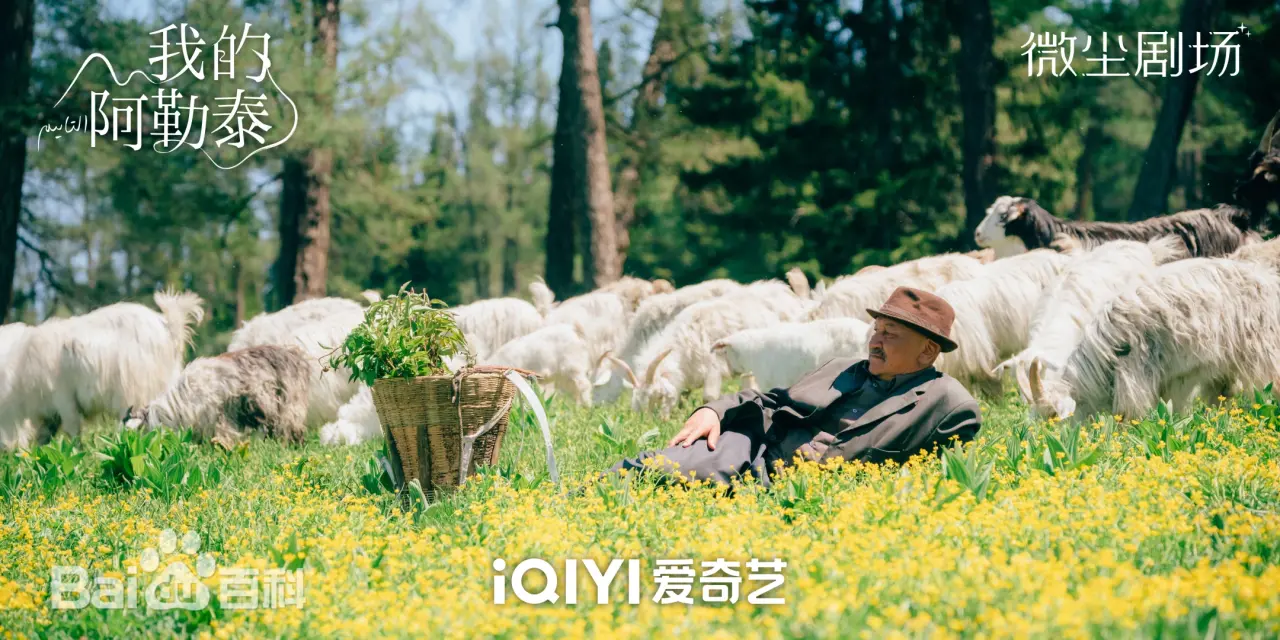 Note: "In a New York Times article, Eric Abrahamsen wrote that Li Juan's career has taken a "wild path" and that she "may be as far outside of the system as Chinese writers are able to get and still publish." (*) Sample : a translation by Jack Hargreaves and Yan Yan exists of her book "Winter Pasture : One Woman's journey with Kazakh Herders", 311p., Astra House, 2021. (ISBN 978-1662600333. Downloadable on Amazon or elsewhere.) Note: "In a New York Times article, Eric Abrahamsen wrote that Li Juan's career has taken a "wild path" and that she "may be as far outside of the system as Chinese writers are able to get and still publish." (*) Sample : a translation by Jack Hargreaves and Yan Yan exists of her book "Winter Pasture : One Woman's journey with Kazakh Herders", 311p., Astra House, 2021. (ISBN 978-1662600333. Downloadable on Amazon or elsewhere.) |
2. CHARACTER GALLERIES Character posters gallery 1 Character posters gallery 1 |
This series, adapted from the autobiographical essays of award-winning writer Li Juan, is a breath of fresh air and a look at new horizons that convey a sense of the poetry and realism of the far away rugged country.
(*) About Li Juan's writing : " In highly socialized China, it is hard to imagine any writer being truly anti-social in the sense of being both disconnected from society and, when necessary, downright offensive. Some of the country’s greatest literary figures — the poet Li Po, the novelist Cao Xueqin — were outcasts, but not by choice: They had been exiled or ignored. --- Yan Lianke represents one model of resistance, but it is a model that very few writers can follow.... He is almost alone. Even his family wishes he would stop.
Then there is Li Juan, who may be as far outside of the system as Chinese writers are able to get and still publish. She lives and writes in the Altay region of Xinjiang, in western China, musing on nomadic lifestyles and the turning of the seasons. Her literary career has taken what she calls the “wild path” — “wild” being traditionally used in Chinese to refer to things outside the establishment.
She isn’t defiant or high-handed; instead she seems shy, and is given to giggling in public. After a decade of writing in poverty, pitching to magazines and publishing houses, the strength of her writing gradually gained recognition. “The success of my writing relies to a certain extent on promotion by mainstream literary circles,” she wrote in an email, “so I can’t claim to be isolated from them. But my attitude has always been, ‘Don’t refuse, but don’t participate.”’ Despite her growing reputation, Li Juan claims to be hopeless at self-promotion: “I don’t know how to do anything but write.” She has little contact with anyone in the literary establishment besides the editors who publish her work.
“Some colleagues think I’m giving myself airs, but there have been some senior figures who have been willing to speak up for me, and I have to thank them.” Li Juan is unfailingly polite, almost self-effacing, except when conversation turns to the craft of writing. Evaluating her own and others’ words, Li Juan turns hard and displays a fixation that calls to mind Yan Lianke’s stubborn revisiting of historical subjects. ..." ( Eric Abrahamsen, translator and publishing consultant living in Beijing, The New York Times , June 16, 2015)
Importance of context and culture : "...There are layers of meaning in Chinese writing that the average Westerner is oblivious to. This is not new. There are a few thousand years of Chinese authors working around the margins of authority. Trying to understand China and it's art by looking at it through a lens of Western ideals is to thoroughly miss the story in the writing, the writer, and the culture." (Kurt Mitenbuler, reaction to Abrahamsen's opinion - June 6, 2015)
 My Aletai series of Li Juan (picture fro Weibo) My Aletai series of Li Juan (picture fro Weibo) |  Bookshop showing the book series and branded products. (picture from Weibo) Bookshop showing the book series and branded products. (picture from Weibo) |
3.1. DESCRIPTION AND COMMENTS
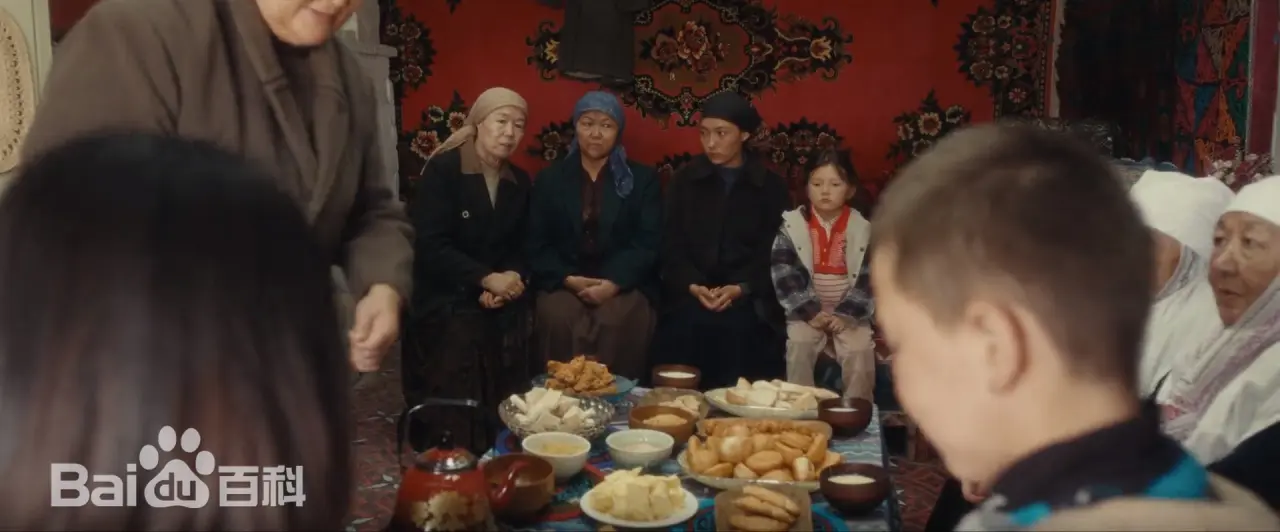 The main focus is on the herding communities of the Chinese Kazakh minority, in the far north of the Xinjiang province, a region called Altay, that stretches over four countries, where several nomadic people of different ethnicity cohabit despite different languages and customs. Their fragile but harmonious balance is almost like enchanted in an apparent simplicity and picturesque timelessness But as the main protagonist points out in a spontaneous speech, change has always been a force that will move it to awareness and adaptation to differences. The nomadic way of life and the beautiful ethnic costumes have not always been the same, and the new technologies and future outlooks are bound to modify the herder culture, slowly and torrential chipping at it in small touches and bigger clashing blows.
The main focus is on the herding communities of the Chinese Kazakh minority, in the far north of the Xinjiang province, a region called Altay, that stretches over four countries, where several nomadic people of different ethnicity cohabit despite different languages and customs. Their fragile but harmonious balance is almost like enchanted in an apparent simplicity and picturesque timelessness But as the main protagonist points out in a spontaneous speech, change has always been a force that will move it to awareness and adaptation to differences. The nomadic way of life and the beautiful ethnic costumes have not always been the same, and the new technologies and future outlooks are bound to modify the herder culture, slowly and torrential chipping at it in small touches and bigger clashing blows.
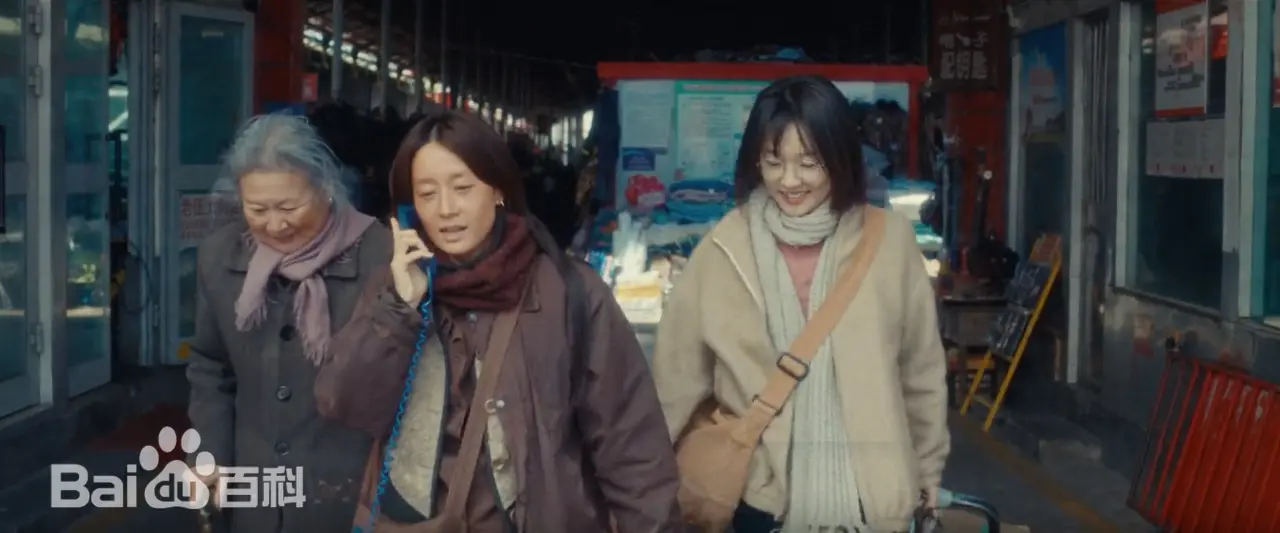 This is portrayed through the eyes of Li Wenxiu, a young woman, about 18 years old, who had briefly had a disappointing brush with urban life as a lowly waitress in an fake ethnic style restaurant of the provincial capital, Ürümqi, in 2001. Being cheated out of the severance pay that was grudgingly handed in part to a co-worker, she traveled back to join her mother and paternal grandmother ("Nainai"), who were eking out a living from small trade, on the far outskirts of "civilization", resorting at times to barter and relying on the customs of the herder community. Thus, Zhang Feixia is given a camel to pay off the debts incurred by Mulati, Sulitan's son and Tokan's husband who died frozen at night on the roadside in drunken stupor.
This is portrayed through the eyes of Li Wenxiu, a young woman, about 18 years old, who had briefly had a disappointing brush with urban life as a lowly waitress in an fake ethnic style restaurant of the provincial capital, Ürümqi, in 2001. Being cheated out of the severance pay that was grudgingly handed in part to a co-worker, she traveled back to join her mother and paternal grandmother ("Nainai"), who were eking out a living from small trade, on the far outskirts of "civilization", resorting at times to barter and relying on the customs of the herder community. Thus, Zhang Feixia is given a camel to pay off the debts incurred by Mulati, Sulitan's son and Tokan's husband who died frozen at night on the roadside in drunken stupor.
 GIF excerpt from the trailer (linked)
GIF excerpt from the trailer (linked)
Li Wenxiu had spent her early youth in a village of Fuyun county where her parents, part of the immigrant workforce from other provinces, had settled down until her father died, leaving his old and partly senile mother aspiring to go back to Shenyang, and Wenxiu's mother intent on not going back to the Jiangnan since family ties there had been lost. The girl's memories were centered on winter and the exhausting digging through high walls of snow from the door of her dilapidated village house. She aspired to escape, to become a writer in the big city despite her meager schooling, but felt fallow and hurt after her first try to support herself. She had been made aware of the need to ripen her skills first. She decided to do so through observation of her own life : where she came from, where she was going to, including being dragged to discoveries of unexpected places, such as the outpost where her mother and grandmother had gone to, a sparsely inhabited village called Saykhan Bulake (Splendid spring water meadow in local language) which was close to the pronunciation of Cǎihóng bù lākè 彩虹布拉克, so understood as "Rainbow Brak/Fallow" by the mandarin speaking women. (Fallow is a farming technique in which arable land is left without sowing for one or more vegetative cycles. ) As season changed, they traveled further again, to the lush but isolated summer pasture (夏牧场 xià mùchǎng) of Naren "summer ranch" on the other side of a desert stretch in which the "Fairy Cove" lake and stream carried away the makeshift urn for the ashes of Zhang Feixia's husband, liberating her from her mental widowhood.
Geographically, the Altay is a system of remote mountains in central Asia that cover an area of 845,000 km2 (326,000 sq mi). The mountains stretch for 2,525 km (1,569 mi) from northwest to southeast. The north western and northern slopes of the Sailughem Mountains are extremely steep and difficult to access. On this side lies the highest summit of the range, the double-headed Belukha, in Russia, whose summits reach 4,506 m (14,783 ft) and 4,400 m (14,400 ft) respectively. The mountains further south are the source of large Russian rivers such as the Irtysh and Ob. Northeast, the mountains merge with the Sayan Mountains, while in the southeast they gradually merge into the high plateau of the Gobi Desert, which is semi arid steppe. Altay city is the main town in the region, with the "Black Irtysh" river separating it to the south from the Byanbulak grassland between Karamay and Ürümqi, separated by the Tianshan mountain range from the Taklamakan Desert, around which oases once marked the stops of the Silk Road.
The story in the drama takes place in the northern triangle north of Altay, and away from Fuyun County (富蕴县) also known as Koktokay County (可可托海县) which has a Geopark.
 Picture from Wikipedia : Irtysh River in the town Koktokay — Panorama in the winter time.
Picture from Wikipedia : Irtysh River in the town Koktokay — Panorama in the winter time.
 Fuyun (كوكتوعاي اۋدانى in Kazakh, 富蕴县 in Chinese) Fuyun (كوكتوعاي اۋدانى in Kazakh, 富蕴县 in Chinese)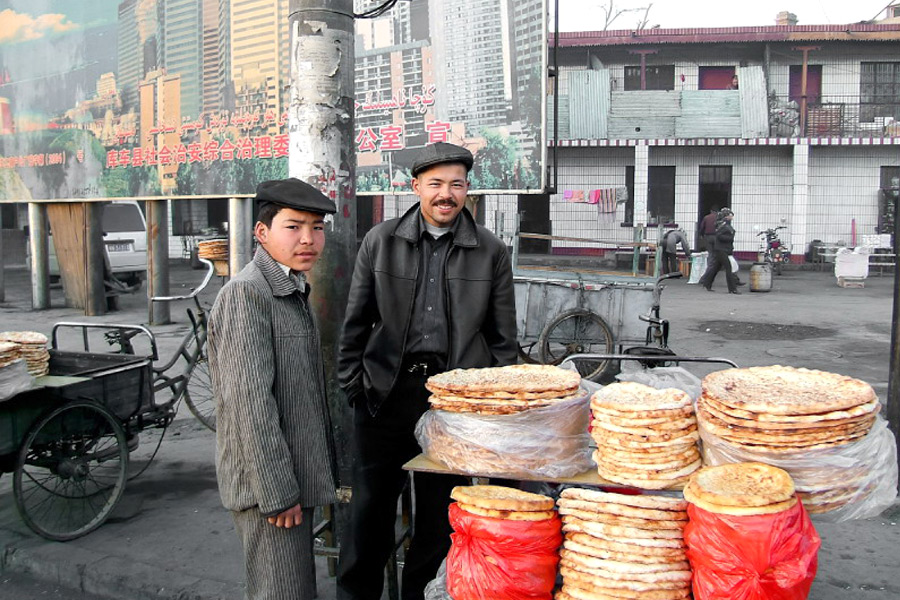 Street vendors selling flatbread "naan" in Ürümqi (city name pronounced as /ʏrʏmˈtʃi/ ) Street vendors selling flatbread "naan" in Ürümqi (city name pronounced as /ʏrʏmˈtʃi/ ) The Grand Bazaar in Ürümqi The Grand Bazaar in Ürümqi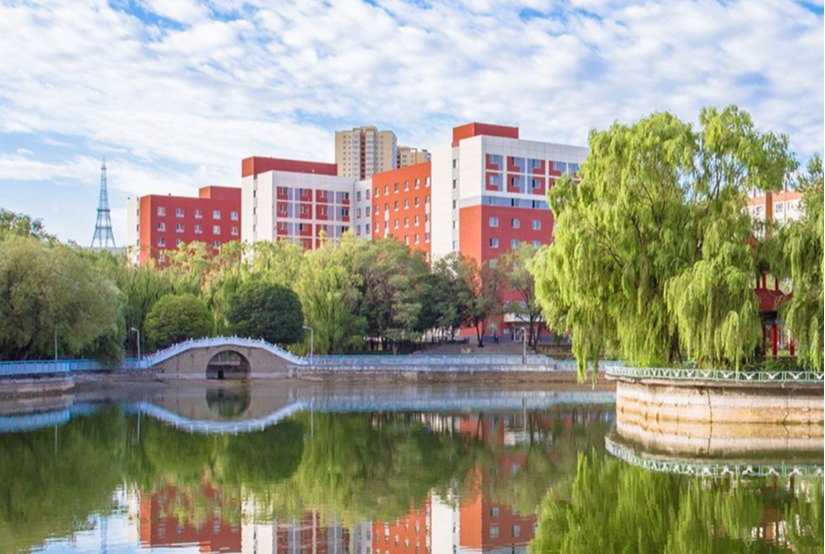 Ürümqi is one of the top 500 cities in the world by scientific research output. The city is also home to Xinjiang University (est.1924), a comprehensive university with the highest academic level in Xinjiang, among several other ones. Ürümqi is one of the top 500 cities in the world by scientific research output. The city is also home to Xinjiang University (est.1924), a comprehensive university with the highest academic level in Xinjiang, among several other ones. |  Ürümqi central business district in 2019. Ürümqi central business district in 2019. A view of Ürümqi before 2008. A view of Ürümqi before 2008.The name of the city : ئۈرۈمچى / 乌鲁木齐 ; pinyin : Wūlǔmùqí, means "beautiful pasture" in the original Oirat Mongol language. After conquering the Dzungar Khanate in 1755, the Qing dynasty renamed the city Dihua (迪化 : "to enlighten and civilize"). Finding that name to be belittling, the Chinese government restored the name Ürümqi on 1 February 1954. It is now the capital of the Xinjiang Uyghur Autonomous Region. "With a census population of 4 million in 2020, Ürümqi is the second-largest city in China's northwestern interior after Xi'an, as well as the largest in Central Asia in terms of population." (Wikipedia) 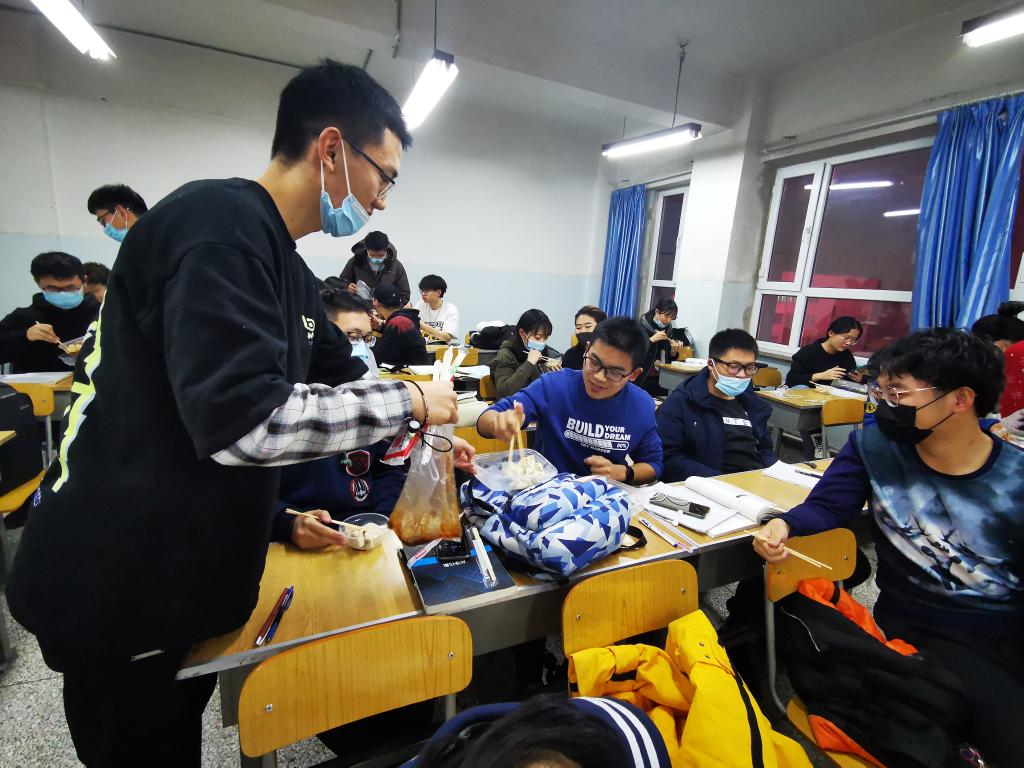 A class in Xinjiang school of Future Technology, newest department, est.2020, at Xinjiang University (they also have laptop computers, of course; some classes of the various institutes now also teach online.) A class in Xinjiang school of Future Technology, newest department, est.2020, at Xinjiang University (they also have laptop computers, of course; some classes of the various institutes now also teach online.) |
 The Mongol yurts of Bugassenden the female chief, grandmother of Chao Ge, in love with Tokan (Gif from screenshots in ep.4)
The Mongol yurts of Bugassenden the female chief, grandmother of Chao Ge, in love with Tokan (Gif from screenshots in ep.4)
We are treated to hear the languages of the ethnic groups who live alongside in this far removed northern corner of Xinjiang : the Kazakh (an ethnic group numbering over 1.5 million people in the PRC sharing language and customs with other groups in neighboring countries) and the Mongols, while being made aware of the accents of the putonghua ("mandarin") speaking Han people who have come to work or seek fortune there such as the Guangdong biker. We hear about a third ethnicity, when a young Daur takes an interest in Wenxiu.
The Kazakh numbers over 1.5 million people in the PRC (another estimate has them as over 1.8 million now), and the Mongols (who are divided in different sub groups) have a population roughly double to that in Mongolia : 6.3 million in the PRC. Both are among the 56 ethnic groups officially recognized in the People's Republic of China, among which are also the 132,299 Daur according to the latest census (2020). The Daur live mostly to the east of Inner Mongolia and Mongolia, along the Heilongjiang river (in Morin Dawa Daur Autonomous Banner in Hulun Buir, Inner Mongolia and Meilisi Daur District in Qiqihar, Heilongjiang). But there are also some near Tacheng in northern Ili Kazakh autonomous prefecture of Xinjiang, close to Kazakhstan border. The Daur are close to the Mongols in customs and language, but have three different dialects.
Kazakh are among China's ten historically Islamic "minorities" among the 55 recognized officially alongside "majority" Han (who make up 92% of total 1.28 billion people in the multi ethnic PRC, 2020 Chinese census numbers). The others are :
|
"The Islam practiced by the Kazakhs in China contains many elements of shamanism, ancestor worship, and other traditional beliefs and practices." Whereas Mongols are mostly shamanistic, or Tibetan Buddhists.
The end episode takes place at the time of Eid al-Adha. This is one on the two main Muslim festivals, held in summer. It is celebrated to mark the end of the hajj pilgrimage and to honor the prophet Abraham. According to Islamic teachings, Abraham was instructed to sacrifice his son Ismael to Allah, in a test of faith. God then replaced Ismael with a sheep just before the sacrifice was to take place. On festival day, the faithful will take a shower, settle down to pray, and only after have a light breakfast of dates ; offering goodwill to others on that day is usual, as is feasting, but with light portions. So, that day, Ba Tai and Suliman must settle their issues.
In order to play the role of Batai in the miniseries, Yu Shi hired a Kazakh teacher before filming started and learned Kazakh language for more than half a year. Already an experienced rider, he both did all his riding scenes himself and also served as riding and shooting instructor.
 We also see the Kazakh version of the buzkashi game, which is the national sport of Afghanistan and Tajikistan. It is a traditional sport in which horse-mounted players attempt to place a goat or calf carcass in a goal. (Similar games are known as kokpar, kupkari and ulak tartysh in Kyrgyzstan and Kazakhstan.) GIF from a mix of screenshots and a video clip from the drama Weibo : Kulan, Wenxiu, and Tokan watch the game in episode 5.
We also see the Kazakh version of the buzkashi game, which is the national sport of Afghanistan and Tajikistan. It is a traditional sport in which horse-mounted players attempt to place a goat or calf carcass in a goal. (Similar games are known as kokpar, kupkari and ulak tartysh in Kyrgyzstan and Kazakhstan.) GIF from a mix of screenshots and a video clip from the drama Weibo : Kulan, Wenxiu, and Tokan watch the game in episode 5.
“Art and love allow humanity to transcend language and national borders,” said director Teng Congcong. (People's Daily online 03/13/2024)
Next section : Description and Comments, part 2
(For length limits reasons signaled by the algorithm, parts 3.2, 4 and 5 have been moved after the first comments by readers-- this section last edited and proofread on May 30, 2024)
3.2 DESCRIPTION AND COMMENTS (PART 2)
 Gif from a video presentation of the drama in Chinese posted April 26, 2024 to Youtube (linked)
Gif from a video presentation of the drama in Chinese posted April 26, 2024 to Youtube (linked)
Some of the problems faced by people in this area (and indeed in many parts of the world) are lightly touched upon :
- The concerns about water management (comically symbolized by Wenxiu's DIY funneling rainwater from the holes in the yurt's roof, ep.5) ; women in the summer pastures wash clothes, hair and themselves in the stream with hard black soap they make themselves from sheep tallow and cinders and fragrant herbs, but when living in the village, they bathe once in a while in bath houses in town. Water is always necessary for food and tea making, and for livestock's drinking needs, so sources, streams, and lakes must be protected reasonably. Floods have always been a recurring threat in China, so diverting excess water and building reservoirs, or canals, has been done for millennia. In the Xinjiang, it is interesting to visit the "karez" underground water funneling system of oases like Turpan, which conserve cool and clear water even in the worst of summer heat. Industrial use has put a strain on the country's water management, so clear waters are treasured now even in the face of economic development needs.
Other forms of industry or resources are not seen in the series, which focuses on agrarian lifestyle. So, for those who are curious, here is an article to broaden perspectives on mining and natural resources of Xinjiang in 2016.
- The pillaging of endangered natural resources and wildlife (such as digging holes in the pastures to unearth fake "medicinal" caterpillar fungus - the real "cordyceps" also nicknamed "Himalayan Viagra" is a very rare and expensive parasite, but not yet a protected species, so unscrupulous harvesters have laid waste to fragile areas, pushing India to outlaw its trade). Click on the picture above for a short presentation of this fungus, by Business insider, in 2019:
- Preserving wildlife is an effort that has consequences on the traditional way of life. Kazakhs used to be among the hunters who used falconry, and notably eagles to hunt. Sulitan is pictured with a photograph of eagle hunting in his yurt and laments the vanishing lifestyle. Although eagle hunting has not totally vanished, it is now regulated within certain areas and under close supervision from foundations dedicated to their protection, so the birds will be reintroduced in the wild to breed, despite the encroachment of economic development efforts. The South China Morning Post had a 2'44 short video to show Kazakh eagle hunters in 2021 and Xinhua News published an article about the old hunters in 2017 (linked with picture above).
 GIF from Weibo video excerpt of Episode 8, Baitan's return
GIF from Weibo video excerpt of Episode 8, Baitan's return
- The peacekeeping efforts that clash against traditions : the Kazakh and Uighur males used not to be considered as "men" without their impressive and not only decorative knives or daggers. Nevertheless, if the Xinjiang minority knives were picturesque, sometimes bejeweled and precious works of art and heirlooms, knives were also often used by Kazakhs and Uighurs to settle drunken or other disputes...
 "There are four famous knives in Xinjiang, Yili shamusak folding knife, Yingjisha craft knife, Yanqi Chen Zhengtao knife and Shache buyingti folding knife. Among them, ingesha knife is most famous for its exquisite shape, beautiful pattern and sharp edge. They are unique in technology and style. They are praised for their economic, beautiful, practical, convenient, exquisite and easy to carry characteristics" (Handicrafts of Xinjiang) Knife-carrying was part of an important tradition, but this had to change following a few shocking knifing of innocent citizens, notably in a bus station, when some extremist sectarians went on bloodthirsty sprees in the wake of unrest stirred by foreign inspired Islamist extremists in the early 2000s. | So, since 2001, nobody is allowed to ride public transport in China (with no folkloric exception for Xinjiang any longer) with knives or large offensive weapons, and at the bus station, Sulitan is denied boarding with his knife and has to ride all the way on his horse to look up Ba Tai. In similar way, the drive to disarm ordinary citizens is shown through the demand by the village chief that Sulitan hand over his last hunting gun (even if he saved two lives by using it.) Different ways were used to help reduce the potentially dangerous weapons, including offering to buy them at official prices ("Urumqi residents hand in weapons", China Daily, 2013, picture below) |
Dealing with religion-inspired threats is difficult, since Muslim faith is a time honored one in China. Ming dynasty rulers and civil servants were often Muslims. Mosques are found in all major cities, and some autonomous regions are administered by Chinese Muslims who support State policies. Indeed, the "ethnic" (or rather, cultural) Hui minority found almost everywhere in China is simply Muslim! So, being a Muslim in China is just matter-of-fact for most, with no discrimination against them or their religion as long as worship is peaceful and heeds the laws (proselytism is banned, education has to meet the state standards to raise new generations that can equally face the new technology and workplaces, keeping peace is a fundamental tenet, but going on pilgrimage to Mecca is not disputed and even supported). Targeting extremism is another matter and this also applies to other sects, be they "Buddhist" or even "Christian".
 GIF from a video on the drama Weibo, Gao the hopeless
GIF from a video on the drama Weibo, Gao the hopeless
- Poverty and hopelessness, addictions and alcoholism is yet another issue : living frugally can be seen as escape or "romantic" as for the herding culture, but it can trigger violence and lawlessness too, alcoholism and addictions. This is also lightly brushed in the drama, with the treacherous Gao and his aggressors, and the eldest son of Suliman, who died a drunk, after years of domestic abuse and leaving his widow Tokan destitute without even a washing board, having to support herself and her children or giving them up to Suliman if she wanted to remarry a nicer man.
 To The Wonder, ep. 6 ; Wenxiu tries on the saukele but learns that her crush Batai will be betrothed to another girl! (GIF from selected screenshots)
To The Wonder, ep. 6 ; Wenxiu tries on the saukele but learns that her crush Batai will be betrothed to another girl! (GIF from selected screenshots)
- Changing matrimonial customs and the need for children. This is touched upon in the story of Tokan and her children Nadira and Yerdana.
The patriarchal model is being challenged by modernity, where children do not always accept the choices imposed on them by parents, such as being ordered to take over herding instead of working elsewhere. Women can make a career for themselves, so staying with the husband and in-laws may not be matter-of-fact ; wedding ceremonies may be felt as less meaningful, despite tall fairy-like Kazakh bejeweled "saukele" hats and other wedding attire.
 Each saukele wedding hat is different, but white color is usually avoided; the influence of Western wedding dress style may allow a veil to be added, such as in the miniseries.
Each saukele wedding hat is different, but white color is usually avoided; the influence of Western wedding dress style may allow a veil to be added, such as in the miniseries.
The "important decision" in love matters is touched on by the conversation between Bai Ta and Wenxiu : love is a burning wish, but reality is there, with the shackles of traditions and differences in education, family, and prospects for work.
Zhang Fengxia, as a free woman in the wake of her widowhood and age (she is about 40) has no qualms about living with and separating whimsically from a lover. She quips about her right to "divorce" if things go awry. In fact, this can be a problem too : the divorce rate in China is very high and it is easy to divorce, sometimes too easy : some women have found themselves officially divorced, unawares, by their unfaithful spouse !
But children remain relatively important not only to keep "blood lines" (besides, marriage between different ethnic groups was never banned; in ancient times, it could even be used as a tool to forge alliances between fiefs and countries, even today, intermarriage is not necessarily despised, the children are even expected to be "more beautiful and more clever"!).
 Still from the making-of, posted to the drama Weibo page.
Still from the making-of, posted to the drama Weibo page.
Recognizing that minzu 民族 ethnic minorities had specific characteristics and customs that needed some protection to keep them from vanishing caused PRC authorities to introduce "positive discrimination" such as reserved seats in the National Assembly, free or almost free health care in hospitals, TV programs featuring minority languages, customs, artifacts, and natural beauty spots to encourage tourism and economic growth. Special efforts were devoted to further literacy and education, facilitating bilingual education (including through translated textbooks) sending young teachers and volunteers on missions to teach in poorer rural communities, and/or establishing boarding schools for those who were living in mountainous or other remote areas, too far away from proper schools. There has been a drive to help minority students access to higher education through preferential treatment, with bonus grades for minority children and 1 or 2 year university preparatory classes that enroll only students from ethnic minorities. In addition, special quotas guarantee each minority to access the "University for Nationalities" (Minzu Daxue, Beijing MUC is a prestigious higher education college with a large offer of majors, from science, engineering, law, tourism.... to music and archeology, and also minority languages and cultures. There are 8 other similar Minzu universities : Chengdu SWUN in Sichuan, Lanzhou Xibei Minzu in Gansu, Dalian in Liaoning, Nanning in Guangxi, Kunming in Yunnan, Xining in Qinghai, Tongliao in Inner Mongolia, and Yinchuan in Ningxia). There are also many universities in Xinjiang, in particular in Ürümqi. Studies about the forms and results of the preferential treatment are many; here is another one.
Minorities used to be exempt from the one child policy that (despite its many loopholes) straitjacketed the Han into limiting population growth. So, the Kazakh population grew from about 600,000 in 1962 to about triple that number in the 2020s. Han people who immigrated to the Xinjiang (and some areas of Sichuan) were also exempted from one child policy : Wenxiu could totally have had a sibling, if her mother had wanted to, but Zhang Feixia preferred trade to housekeeping.
 To The Wonder, ep.2 : Intercommunication - nomads shopping in Zhang Feixia's store in Saykhan Bulake. (GIF from selected screenshots)
To The Wonder, ep.2 : Intercommunication - nomads shopping in Zhang Feixia's store in Saykhan Bulake. (GIF from selected screenshots)
- Communities and floating population, intercommunication. Xinjiang in 2020 had, according to an official report, 56.53 % of the total 25,852,345 people living in urban areas; 43.47 % in rural areas (an increase of 13.73% urban dwellers since 2010).
[PRC countrywide] - The concept of "mínzú" 民族 ("ethnic minority" or "nationality") is complicated, although formalized in official regulations since 1954 in China. It refers both to linguistic and historical identities and a notion of shared nation building, not an opposition of separated categories dominated by one, although the "stalinist" understanding of "minority" people led at first to establish the "autonomous regions" (or prefectures, counties, or "banners" in Inner Mongolia). Soon after the establishment of the PRC, a team of social scientists was assembled to number and describe the various mínzú. This proved to be more difficult than first thought, and if the denial of their existence before 1949 (or reduction to 5 main ethnic groups by the Republic in 1911) had been criticized, the final decision was also not totally satisfactory, since it reduced the number of recognized ethnic groups by perhaps eight-fold, and today the Wèi Shìbié Mínzú (literally 'undistinguished ethnic groups') total more than 836,500 people (as of 2020 latest census). These groups include Geija, Khmu, Kucong, Mang, Deng, Sherpas, Bajia and Youtai (Jewish). Other groups were just lumped in with the Han (汉人) or Hui (itself a special category, since it has no real distinctive ethnic characteristic other than religion and History).
39 ethnic groups were recognized by the first national census in 1954. This further increased to 54 by the second national census in 1964, with the Lhoba (Luòbā 珞巴) group added in 1965. The last change was the addition of the Jino people (Jīnuòzú 基諾族) in 1979, bringing the number of recognized ethnic groups to the current 56.
汉人 Hànrén people themselves are a "mínzú" for the "groups nomenclature" purpose, but when looked at more closely, they are also a cultural construct over millennia, incorporating and assimilating various invaders who ruled the country, or countries, as the "Warring states" (481/403 BCE - 221 BCE) period reminds : many different people, calling themselves then Huáxià people (华夏; trad. 華夏), decided to confederate in very ancient time under the central Zhou dynasty (1046 BC until 256 BC), from which later emerged the Han dynasty (202 BC – 9 AD, 25–220 AD), honored in the cultural identity as Han people.
So, this may explain why a reply to a question about "Han ethnicity" also is : "Han is never an ethnicity. We Chinese call ourselves Han Chinese to honour one of our greatest dynasties. Similarly in Southern Chinese dialects we do not call ourselves Han but Tang people. Again named after another of our greatest dynasties. -- Han and Tang is not an ethnicity. It is a concept of culture. Hence a PRC Chinese, a Taiwanese Chinese, a Malaysian Chinese , a Singaporean Chinese are all different people. If we want to emphasize our Chineseness, we call ourselves Han Chinese or Tang Chinese. We are united by culture not by ethnicity."
|
The parts of the Chinese puzzle still survive in the dialects of "mandarin language" and local identities that make distinctions between for example : "Northerners" and "Southerners", Dōngběi rén (people from the industrial North-East of China), Shànghǎi rén 上海人 ; Yuè 粤 (Cantonese speakers), Wú 吴 (lower Yang-tse river people of the "Jiangnan" region), Shǔ 蜀 (Sichuanese mandarin speakers), Mǐnnán 闽南 (Fujian but also other Chinese origin people who disseminated to South-East Asia and Taiwan), Hakka (or Kèjiā 客家 , descendants of Yellow river soldiers who settled into distinctive round community buildings in the South) etc. ---The word 汉 Hàn only became widely understood as "Chinese" after the Qin dynasty (which despite being short-lived, 221 to 207 BC, established approximate boundaries and a basic administrative system that were followed by subsequent rulers of China). The Qing (Manchu rulers, 1636-1911) equated the lands of the Qing state, including present day Manchuria, Xinjiang, Mongolia, Tibet and other areas as "zhōngguó"中国 ("central country", China) in both the Chinese and Manchu languages, defining China as a multi ethnic state, rejecting the idea that China only meant Han areas.
But in the 1870s, revolutionary ideas started brewing, with the aim to topple the ailing Qing dynasty that was powerless against invaders who tried to colonize China and subdue it through the opium trade. Sun Yatsen/Sūn Zhōngshān 孫中山 (modern China's founding father with the first Republic proclaimed after the revolution of 1911) frequently used the term Zhōnghuá mínzú 中华民族 to refer to the people of China sharing a same identity in the light of nation building. Zhōnghuá mínzú was initially rejected in the People's Republic of China (PRC) but resurrected after the death of Mao Zedong in 1976 to include Han Chinese alongside 55 other ethnic groups as a collective Chinese family. Since the late 1980s, the most fundamental change of the PRC's nationalities and minorities policies is the renaming from Zhōngguó rénmín (中国人民; 'the Chinese people') to Zhōnghuá mínzú (中华民族; 'the Chinese nation'), signalling a shift away from a multinational communist people's statehood of China to one multi-ethnic Chinese nation state with one single Chinese national identity.
 |
Minority people were depicted on the Chinese banknotes of the PRC, although the higher value ones from 1Rmb to 100 Rmb show national beauty spots or monuments. Some of these banknotes have now been discontinued, as the monetary value and way of spending changed (most transactions now go through electronic payments, including phone apps), so few people use coins or paper money even in remote areas any longer. |
Today, the population ratio of "Hànzú" 汉族 vs Shǎoshù mínzú 少数民族 minorities is, as of the 2020 census : 91.10 /9.90% (1.2 billion vs 125 million of the total 1.409 billion population).
[Focus on Xinjiang] . Within Xinjiang province, the population ratio of Han vs minzu (民族) minorities was 42.24/57.76%. Among the minorities, Uighurs numbered 77.85%. Their group increased by 1.6 million people since 2010 ; the Han increased by 2.1 million, mostly from movement from other provinces. The "floating population" in Xinjiang numbered 8,051,404 persons. Of them, the population moving into Xinjiang from other provinces reached 3,390,712 persons. Those moving within Xinjiang (herders, job seekers...) reached 4,660,692 persons. "In 2023, Xinjiang received over 265 million visitors from home and abroad,which is a record high and achieved a total tourism revenue of nearly 300 billion yuan."
51.66 % of the population were males while 48.34 % were females : the imbalance is about same as it was in the 1960s. 22.5 % are less than 15 years old; the elderly over 60 are about 19%. In Xinjiang, the share of children in the age group of 0 to 14 was 4.51 percentage points higher than the national average of 17.95 %; that of people in the working age group of 15 to 59 was 2.91 percentage points higher than the national average of 63.35 %. Over the past 60 years, the average life expectancy has increased from less than 30 years to 75.65 years.
The efforts towards education have been successful : the illiteracy (people who could not read) rate in Xinjiang was 2.66 %, lower than the national average. People aged 15 and above had benefited from 10.11 years schooling (increased from 9.27 in 2010), with over 4 million people having university education (junior college and above). The education system comprises primary school=6 years; junior middle school=9 years; senior high school=12 years; and junior college and above=16 years. (Besides standard education is supplemented by instruction broadcast over radio and television.)
Chinese language is used in schools for Geography, History, Science and Mathematics teaching, while the Uyghur language is also maintained as a subject. Indeed, Uyghur is one of the working languages of China's highest parliament, the National Assembly. It can also be studied and researched in universities such as the Minzu university in Beijing.
According to Britannica encyclopedia, Xinjiang is inhabited by more than 40 different ethnic groups, the largest of which are the Uyghurs and the Han (Chinese). In addition to Hui (Chinese Muslims), other groups include Mongolians, Khalkha, Kazakhs, Uzbeks, Tungusic-speaking Manchu and Sibos, Tajiks, Tatars, Russians, and Tahurs. There are two major language groups besides Chinese in the region. The Mongolians speak languages of the Mongolian family of the Altaic group, and the Uyghurs, Kazakhs, and Uzbeks speak languages of the Turkic family of the Altaic group. The Tajiks, however, speak a language belonging to the Iranian branch of the Indo-European language group. Mongolian, Uyghur, and Kazakh (*) are written languages in everyday use (in addition to official "Hanzi" Chinese script); Mongolian has its own script, while Uyghur and Kazakh are written in the Arabic script. Nevertheless they don't use the 27 letter Persian/ Arabic alphabet that has no consonants (and was used for writing the Chagatai language, the regional literary language); they use a 32 letter alphabet since 1978 and reformed by the Chinese government in 1983, to represent the Uyghur vowels. This alphabet is also used on the official Rmb banknote (top right printed mention, under the Mongol script - the other scripts on the note are : pinyin using Latin alphabet, Tibetan, and Zhuang, representing the five main languages spoken in China by Han or non-Han minorities).

 қазақша or қазақ тілі қазақша or қазақ тіліقازاقشا or قازاق ٴتىلى qazaqşa or qazaq tılı 哈萨克 (人) [hā sà kè (rén)] | KazakhThe word originally meant something like “wanderer” or “free man”. But in today Kazakh language it's just used as an ethnonym, not a noun to describe a wanderer.<-- Writing of the word in Perso-Arabic, Cyrillic, Latin scripts (Wikipedia) and in Chinese Hanzi and putonghua. |
Spoken Uyghur predominates in Xinjiang despite the popularization of putonghua ("common language" based on northern mandarin language of China). Also, nowadays, in Kazakhstan, Kazakh is mostly written in the Cyrillic script, whereas Arabic-based alphabet is still being used by minorities in China. Since October 26, 2017, via Presidential Decree 569, Kazakhstan will adopt the Latin script by 2025.
"People can freely choose which language to use for communication. Furthermore, Xinjiang Radio and Television Station broadcasts television and radio programs in several languages on a daily basis. Xinjiang Daily newspaper along with several local newspapers are published in multiple languages as well. Additionally, the streets of Xinjiang display shop signs that incorporate both Mandarin Chinese and minority languages."
 detail from a photo posted by a traveler to Ürümqi on Twitter, in October 2023 (link)
detail from a photo posted by a traveler to Ürümqi on Twitter, in October 2023 (link)
Despite the linguistic differences, the Xinjiang, an ancient land of oases and cross border trade, of which the Silk Road remains famous, is a place where communities are not xenophobic and are open to intercommunication. Since the Tang dynasty, a system of writing the Chinese language with Arabic script gradually developed and standardized to some extent. (Currently, the oldest known artifact showing signs of this Xiao'erjing transliterating tool of special Perso Arab script is a stone stele in the courtyard of Daxue Xixiang Mosque in Xi'an). People learned smatterings of other minority language for the purpose of trade, or family alliances. They also now use the putonghua common language. But in the region, road signs and storefronts usually use double writing systems (or triple, if there is pinyin transliteration to Latin alphabet too); sometimes they go all the way to writing in 5 languages such as this sign in Kashgar showed (it has Uighur, Hanzi, English, Russian, and even Japanese!) :
 Street sign over a busy intersection in Ürümqi, October 2023
Street sign over a busy intersection in Ürümqi, October 2023
[Focus on the Miniseries and Li Juan's books.] The presentation of the text basis for the mini-series on Baidu had an interesting note about Zhang Feixia's efforts at intercommunication, which also illustrates how no language stays in stasis, but is constantly evolving, borrowing words, creating new ones, even modifying grammar, a subject of great interest for linguistic research!
The book written by Li Juan documented sometimes funnily these spontaneous efforts at intercommunication, using a sort of pidgin : "Xinjiang is a place where many ethnic groups live together, and many languages coexist. Language is the carrier of culture, and the cultures of various ethnic groups blend and coexist in the garden of language, creating Xinjiang’s unique Chinese vocabulary. Li Juan's family first arrived in Altay. They were foreigners, and they came from the Han people to the Kazakhs. The language barrier was the biggest obstacle to communication. In order to achieve the purpose of communication, some words with national characteristics were created. Li Juan's mother is always "cleverly" inventing some simple and easy-to-understand words, such as "kā lā mógū" (彩虹布拉克), which is a mixture of Kazakh and Chinese. Kara means black in Kazakh. Mógū means mushroom in Chinese : the new words are easy to understand and remember. They are still used by people today, almost all over Altay! The Xiāngsī (相思) brand cigarettes are nicknamed "xiǎo niǎo" (小鸟 Birds), the grenade-shaped liquor is translated as "Bang Bang" (砰砰), the golden fish is goldfish (金鱼 jīnyú), and the "beautiful bird with a big tail" is peacock (孔雀 kǒngquè) . These are all words originally created by Li Juan's mother. Although Li Juan’s mother translated haphazardly between Kazakh and Chinese without following the proper rules of meanings' correspondence, because of this carelessness, communication was simplified and convenient, and the goods at home were sold. From this we can see the efforts Li Juan’s mother had made in order to communicate and make ends meet." (Baidu)
"To Love, to Live, to Get Hurt" :
Men seni jahsi koremin."
In Kazakh culture, friendship or love occurs between people because they are seen.
So in Kazakh "I see you clearly" means "I like you" !
"A cloud came from the sky, and a puff of sand rolled up in the distance. A passer-by comes and you don’t understand what he says, but you are still willing to sit down and have a cup of tea with him. If life goes on like this, will there be more questions or answers? It's a nice weather with no wind or rain. Is it better to stay or leave? This is a story about search, loss and far-flung territories. Whose Altay is it? The answer is floating in the wind." (from the drama Weibo)
Other drama shot in and depicting places and minorities of the Xinjiang:
 |
Road Home (on Viki ; or iQiyi vip)
(2023, romance, Jing Boran, Seven Tan Songyun)
The companion piece Where was this filmed presents some other interesting places, some very close in the Altay : Kanas Lake and Hemu Village.
To further discover and know the Xinjiang, here are a few selected videos, subtitled in English:
9分鐘遊遍烏魯木齊 - Urumqi: the center of Asia (Travel around Urumqi in 9 minutes), Travel and business advisory, posted Nov.2023
逛新疆大巴扎市场 Touring the Xinjiang Grand Bazaar ⭐ 21 minutes Vlog tour showing places and food and more inside the sprawling but very secure Bazaar, posted Oct.2023 (triple subtitles in Hanzi, pinyin, and English)
畅游北疆,去看中国最美的秋天|Northern Xinjiang Travel Guide: The Best Place in China to See Fall Foliage, 31 min , posted Oct. 2021
《中国推介·好客中国》阿勒泰:人间净土 中国雪都 Altay: ‘The Pure Land of the World and the Snow City of China’, 5min12 , posted May 2021
Next section : Production and reception
Link Back to Table of Contents. This section last edited May 23, 2024
4. PRODUCTION AND PROMOTION
The miniseries was registered in January 2023, and on April 29, 2023, the production released a set of launch photos. Filming went on in Burqin County 布尔津县 and Habahe County 哈巴河县 in the Altay region (two counties close to Kazakstan border in the west and to Kanas Lake in between the two, where several minorities live : mostly Kazakh 60%, Han 29%, and Hui, Mongol, Tuva and other; Habahe which also borders with Russia to the north, is the place where the Naren Summer Ranch 那仁夏牧场 can be found, as well as the Birch forest resort 桦林度假村 and the small desert Baisha lake 白沙湖 between dunes.). Shooting captured the real local customs and recorded the daily life of nomads such as grazing, transitioning, weddings, and horse racing events. Main filming took two months in Altai for Ma Yili, who felt like it was a healing period for herself too.  On May 15, a 7'+ BTS recording focused on Yosh was posted to the drama Weibo (click on the GIF to view it in full) On May 15, a 7'+ BTS recording focused on Yosh was posted to the drama Weibo (click on the GIF to view it in full)
In December 2023, the miniseries was expanded to 8 episodes instead of the 6 initially envisioned. This drama is the first mini-series in the industry to use the "native HDR" shooting and production process. In order to truly present the natural scenery and true style of Altay, 4K ultra-high-definition shooting and HDR monitoring are used to control the exposure and color of the screen. 4k picture quality can restore reality to the greatest extent, and can also capture delicate emotions such as tears in the eyes of actors, as well as the difference between bright and dark parts. Dolby Atmos was used to upgrade the sound from two-dimensional to three-dimensional, allowing the audience to have a stronger sense of the outdoor atmosphere and some sounds like a bed collapsing.  The world premiere was held in Cannes, France, on April 7, 2024. (*) A new trailer and stills were released on April 11. The play participated in the 14th Beijing International Film Festival and took part on April 25 in the China Film Archive Art Cinema in Asia Premiere event. (*) To the Wonder was entered into the official selection of the long-form competition of the 7th edition of Canneseries, or Cannes International Series Festival (April 5-10, 2024), first airing there on April 7, 2024, as part of a number of series from around the world vying for attention and to find broadcasting markets beyond their original platforms (iQiyi for the Chinese drama). This was a premiere Chinese drama in competition for five major awards against seven other international series. Two episodes were aired. To The Wonder did not win: a German tragicomedy series titled The Zweiflers took the trophy. But the Chinese drama did catch attention, with its semi documentary theme mixed with an unusual romance. On May 6, the drama schedule was released.On May 7, a CCTV version trailer was released and on May 8, the drama aired on iQiyi. It quickly gained attention : 190 million people went to the Weibo page before May 8, when the popularity index rose to 6000 , and on May 9, it rose to 7000 ; on May 10, the initial Douban rating was 8.5 but rose next day to 8.6, and again, to 8.7 on May 13, 8.8 from 100 000 ratings and even for a while 9.4 on May 16!
  The DRAMA WEIBO has registered 51,000 fans by May 13 and shows many nice clips. The DRAMA WEIBO has registered 51,000 fans by May 13 and shows many nice clips.After the drama was broadcast on prime time on CCTV, the live ratings of the first episode ranked first ; on May 9, 10:02, Maoyan network registered over 10 million views for the miniseries. On May 10, around 14:00 To The Wonder /My Aletai received an 8.5 high Douban score, becoming the Top 1 rated show on Douban in 2024 ! On the same day, a livestream had members of crew and cast talk together about their experience filming the miniseries :  The director explained that although humorous elements were added to the play, they were kept within a moderate range to prompt the audience to reflect. (links to the recording of the livestream, in Chinese, with no subtitles) The "dombra" (traditional Kazakh instrument used in the miniseries) was shown - see description in Music section, below. The director explained that although humorous elements were added to the play, they were kept within a moderate range to prompt the audience to reflect. (links to the recording of the livestream, in Chinese, with no subtitles) The "dombra" (traditional Kazakh instrument used in the miniseries) was shown - see description in Music section, below. "The composer Gao Xiaoyang is a native of Xinjiang. He tried to integrate national elements into the audio-visual language and distinguished the theme music of the play in time sequence. The first half of the theme music is a typical movie music melody, which is warm and firm, and the second half is a whirling melody with Kazakh characteristics."  Humor was both spontaneous and planned : the production team spent a long time negotiating with Andy Lau's team to obtain his portrait authorization for the "cow licking poster" scene in episode 2 (GIF from screenshots above) which was in the book ; they also got the Tianma motorcycles ad in, despite the low budget of the series. Humor was both spontaneous and planned : the production team spent a long time negotiating with Andy Lau's team to obtain his portrait authorization for the "cow licking poster" scene in episode 2 (GIF from screenshots above) which was in the book ; they also got the Tianma motorcycles ad in, despite the low budget of the series. On May 7, a "Beijing first screening" collective interview (Chinese, no subtitles, 42'24) and "meet and greet" was recorded, where the main cast appeared and was handed framed "flowers" character posters ; Yu Shi also sang and performed on the guitar the "moonlight" song. From right to left on the picture : director Teng CongCong, Ma Yili, Zhou Yiran, Yu Shi, Alima, Yan Peilun. Also check (Chinese, subtitles in Hanzi), the thoughts of director Teng CongCong, recorded same day. There are also several other interviews of Yu Shi etc. On May 7, a "Beijing first screening" collective interview (Chinese, no subtitles, 42'24) and "meet and greet" was recorded, where the main cast appeared and was handed framed "flowers" character posters ; Yu Shi also sang and performed on the guitar the "moonlight" song. From right to left on the picture : director Teng CongCong, Ma Yili, Zhou Yiran, Yu Shi, Alima, Yan Peilun. Also check (Chinese, subtitles in Hanzi), the thoughts of director Teng CongCong, recorded same day. There are also several other interviews of Yu Shi etc. |
SOME REVIEWS SELECTED BY BAIDU : "My Altay" gives people a sense of long-lost nature: the characters and stories all come from nature, and the environment and scenery are completely natural. It is as if you have tasted a bite of food without any additives. Chew the mellow flavor of a natural grain. There is no carefully constructed scenery, no atmosphere created by lighting, and no artificial drama elements with strong plot, fast pace, and multiple reversals. Nature is the stage for characters. People live "naturally" in nature, and people and nature are integrated. The living conditions of grasslands, rivers, mountains, sheep, horses, and people harmoniously constitute and restore an original ecological relationship. The expression of prose culture also gives the audience a casual and free viewing mentality (commented by Li Jingsheng, vice president of the China Federation of Radio and Television Social Organizations) . The fact that a TV series like this that takes the path of "prose culture" can be so exquisite, clear, and delicate in meaning, can be seen as a manifestation of the aesthetic consciousness of the creators and producers and broadcasters. Although it cannot be said to be earth-shattering, the cows and sheep are shown truthfully, wind and low grass is felt, and the temperament is mirrored in the atmosphere. It not only presents the beautiful Xinjiang through the first-person perspective, but also depicts a "Taoyuan"(**) human world with realistic fireworks of the noisy world. The main creative combination of Dapeng, Teng Congcong, Ma Yili, Zhou Yiran, and Yu Shi also contributed unique artistic diversity (Vice Chairman of the Chinese Literary Critics Association and Professor Yin Hongping of Tsinghua University, 2024-05-11) With its modest and clever content, the play inadvertently and poetically expresses many ultimate philosophical thinking and life themes. The narrative reach of the whole play, with the Han girl Li Wenxiu as the first protagonist, brings out every crystal-clear detail in the ethnic minority village of Sayhanbulak, making the audience feel as refreshed as if touched by the wind blowing from the Summer Pasture. Designing "intruder" characters is a common technique used in many novels and film and television works to achieve a defamiliarizing narrative effect. Li Wenxiu, the first protagonist in the play, and even the entire family, including his mother Zhang Fengxia and grandma, are "interlopers." This design gives the audience a huge sense of immersion. Through Li Wenxiu's whole process from "breaking in" to integrating, people can feel the scenery, customs and spiritual cultivation of this border home. The play is an innovative film and television adaptation of Li Juan's essay collection of the same name. It not only continues the original author's eloquent, relaxed and humorous style, but also blends settings and details from different works, and creates the original character Batai. , making the life trajectory of Han girl Li Wenxiu and her mother Zhang Fengxia in the Altay region of Xinjiang more full and vivid. Here, sisters "go shopping" by cutting fungus and chewing pine gum in the pine forest; women also worry about washing clothes, using "black lumpy" suet soap that may have mutton on them. Activities with prominent ethnic nationality features such as the "buzkashi" or "horseback sheep-catching game" (马背叼羊比赛 Mǎ bèi diāo yáng bǐsài, in Chinese) ; and the Eid Al azha (古尔邦节 Gǔ ěr bāng jié Festival, in Chinese) are even more fascinating. The series does not deliberately create clichés [狗血 "dog blood" in Chinese] or add "drama" characters. With its close-to-life narrative and interesting and cute characters, the audience can be integrated into the daily life of the multi-ethnic people in the grassland, arousing strong resonance. |
(**) Note : 桃源 "Taoyuan" is the heavenly Peach Blossom land ideal/Arcadia
Da Peng was executive producer of the miniseries, Teng Congcong was director and scriptwriter, Ma Yili, Zhou Yiran, Yu Shi were main cast.
 Interesting interview of Yu Shi (posted May 10, 2024 to Youtube, click on picture to view in full and listen) Megumi-H commented "In a recent interview with Yu Shi, the ML, he mentioned that Ba Tai’s intentions on his return to the village was not to work on his relationship, it’s more that he had come to terms, grown and decided to return home. And the short hair cut is symbolic. Yu Shi said when he maintained his long hair, it was a rebellious expression, but when he cut it short, it showed his acceptance of who he is. (At 6:55mins was where he talks about his character’s design and mindset on his return to his village…)"
Interesting interview of Yu Shi (posted May 10, 2024 to Youtube, click on picture to view in full and listen) Megumi-H commented "In a recent interview with Yu Shi, the ML, he mentioned that Ba Tai’s intentions on his return to the village was not to work on his relationship, it’s more that he had come to terms, grown and decided to return home. And the short hair cut is symbolic. Yu Shi said when he maintained his long hair, it was a rebellious expression, but when he cut it short, it showed his acceptance of who he is. (At 6:55mins was where he talks about his character’s design and mindset on his return to his village…)"
 and a subtitled video of Yu Shi interviewed by CGTN on "The Vibe" 2024.05.25 (9'49) where Yu Shi expresses the challenges he faced in the production, his wishes for the future, and sings Moonlight with an English subtitle version, at the end of the feature.
and a subtitled video of Yu Shi interviewed by CGTN on "The Vibe" 2024.05.25 (9'49) where Yu Shi expresses the challenges he faced in the production, his wishes for the future, and sings Moonlight with an English subtitle version, at the end of the feature.
 + a different, shorter one of 24.05.29, where Yu Shi talks about his character concept and imagined back story, and the possible evolution of the new generation of Kazakhs in China. (6'30, subtitled)
+ a different, shorter one of 24.05.29, where Yu Shi talks about his character concept and imagined back story, and the possible evolution of the new generation of Kazakhs in China. (6'30, subtitled)
 Some stills from the making-of have been posted to the drama Weibo page, with this mention: "We walked through the snow in April and the sand in May in Altay, touching the creatures everywhere and the elves of the grassland [angel emoji]. Thank you to everyone who worked together to create My Altay."
Some stills from the making-of have been posted to the drama Weibo page, with this mention: "We walked through the snow in April and the sand in May in Altay, touching the creatures everywhere and the elves of the grassland [angel emoji]. Thank you to everyone who worked together to create My Altay."
 A collection of BTS from the mini series. 58'32. In Chinese without English subtitles.
A collection of BTS from the mini series. 58'32. In Chinese without English subtitles.
The mini series has drawn widespread attention, so you can find many other videos with interviews, BTS, and clips on Youtube and other platforms. I hope the ones I selected already are sample enough to explain the appeal. This is a drama that can be savored and re watched with almost no stress. Before I end this thread, here is a sample of its international appeal : the video review in Russian by Masha, posted to Youtube which includes some snippet samples in the warm recommendation : 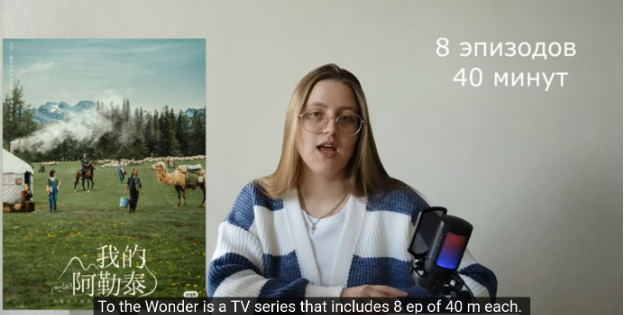
Next section : Music and OST This section last edited June 30, 2024
5. OST MUSIC
(click on pictures to link to music or source)

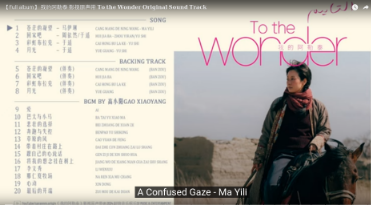 EXTENDED OST with lyrics and subtitles, by Sarann to listen to (1h01min31) ; the four major songs and their backing tracks + the background music composed by Gao Xiaoyang (but not totally complete since three songs on the official OST list are missing as well as the dance music in ep.6)
EXTENDED OST with lyrics and subtitles, by Sarann to listen to (1h01min31) ; the four major songs and their backing tracks + the background music composed by Gao Xiaoyang (but not totally complete since three songs on the official OST list are missing as well as the dance music in ep.6)
| No. | Song Title | Artist | Listen on (click on pictures or links) |
|---|---|---|---|
| 1. | Confused Gaze (苍茫的凝望) composer : Yuan Wenrui 袁文睿 | Ma Yi Li 马伊琍 | 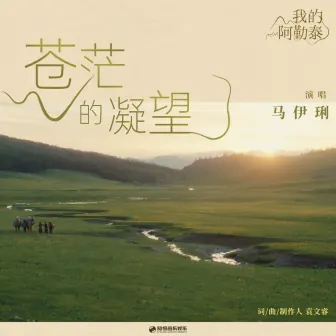 + MV with Korean subs + MV with Korean subs |
| 2. | Let's Go Home (回家吧) composer : Tang Yeshu 唐野树 ; lyrics : Tian Heming 田贺铭 | Zhou Yi Ran & Yu Shi | 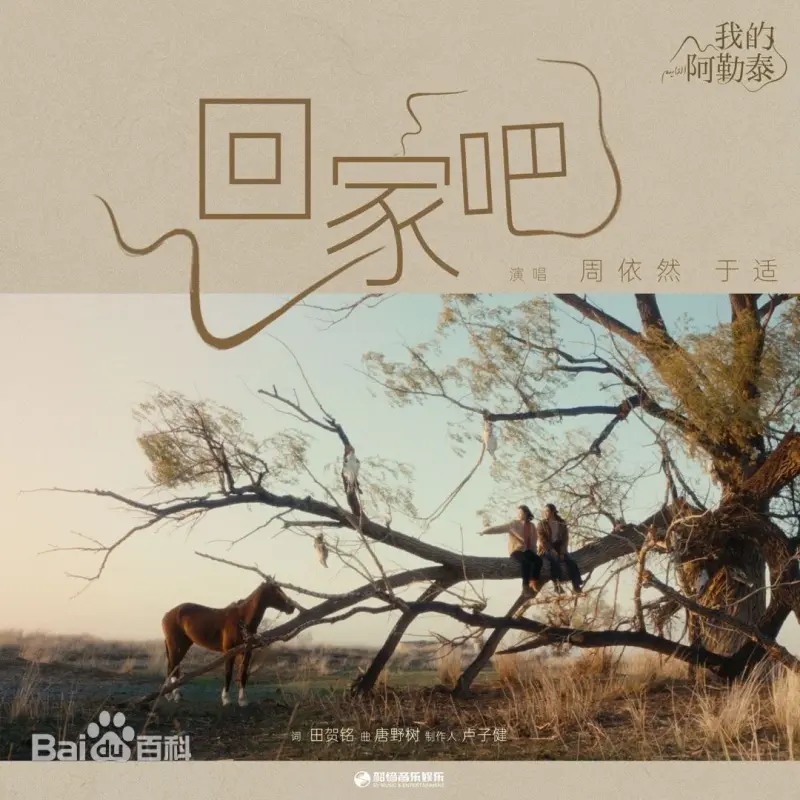  |
| 3. | Rainbow Brak (彩虹布拉克) Yu Shi's version of Let's Go Home | Yu Shi 于适 | 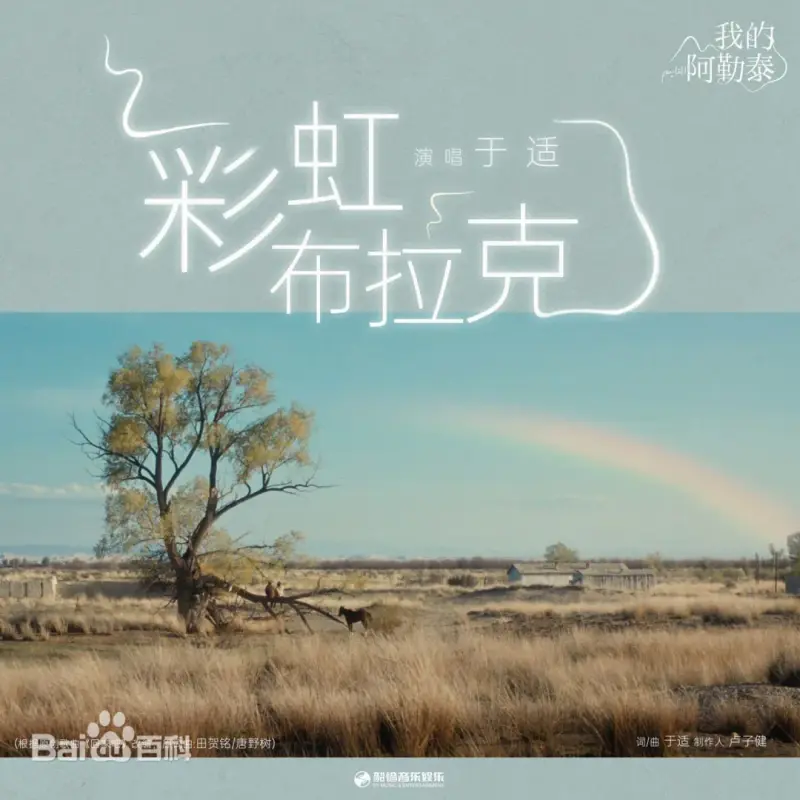 + Sarann's subtitled MV: + Sarann's subtitled MV: |
| 4. | Moonlight (月光) composer : Yerpoli 叶尔波利 | Yu Shi 于适 Also sung with Yerpoli : |  ep.6 + final theme ep.6 + final theme |
| 5. | Altay (阿勒泰) composer: Yerpoli 叶尔波利 | dombula &song by Yerpoli on YT recording ; other version a cappella group song in bath house, ep.3 |  opening credits of ep.3 opening credits of ep.3 |
| 6. | White Waves (白色的波浪) composer : Shailasi Garmuhamati (沙依拉西·加尔木哈买提) | Sayrax Jarmukamet playing his 2018 composition published on ModernSky World Music, and live. |   |
| 7. | Heaven on Earth (人间天堂) composer : Ahsan Haigh (阿山·海格) | played by Sayrax and Mamul. |  |
 |  | 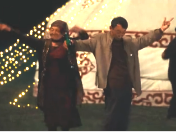 |
In addition, commenters (thank you to roya and Malachite Lizard) hunted up these pieces from the dance sequence in episode 6 :
INSTRUMENT "Dombula or Dombra" ( о быра in Kazakh language) is the traditional long necked lute, plucked instrument of the Kazakh. The instrument differs slightly in different regions. The Kazakh dombra has frets and is played by strumming with the hand or plucking each string individually, with an occasional tap on the main surface of the instrument. The body is one piece, carved of wood in a spoon form. While the strings are traditionally made of sinew, modern dombulas are usually produced using nylon strings. The instrument used to be the herders' companion while they were herding sheep on pastures. There are three legends about it: one the tale of the old herder Akan, one about a soul partner of people, and one about the tree that can sing. It shows the long history of the Dombra and its wide range of sounds, which is very suitable for fast rhythm.
| |||||
| Music Producer GAO XIAOYANG and Composer YERPOLI in interview: [mentions in square brackets are added by me; click on links or pictures to watch and listen to the presentations of the instruments] Translation of the Baidu feature : "New Weekly" reporters conducted exclusive interviews with film and television music producer Gao Xiaoyang and national musician Ye Erpoli. The following is their self-report. [2024-05-12 original story written by 阿祯 A Zhen]
I heard this song when I was a child in Baihaba, the main filming location of "My Altay". In the Altay region, there are many local folk songs, which are performed with national musical instruments, such as the relatively familiar "Dombula" 冬不拉. In order to harmonize the real and heavy life emotions with the images, when making the soundtrack, I chose the most representative Dombula, and also added some fusion elements with Altay characteristics, such as mouth harp 口弦 and "khoomei" [呼麦 is a form of Mongol-Tuvan throat singing.]. In addition to the Dombula, there are also some little-known stringed instruments in Altay. Among them, the kobyz [库布孜] is my favorite. Its structure is very simple. It is just a hollowed out piece of wood with two strings attached. There is no panel. Although it is simple to make, the sound of Kubuzi is simple and melodious, and the music played with it seems to flow into the heart I grew up in northern Xinjiang, and when I was composing the soundtrack for "My Altay," many scenes from the past would come back to mind. For example, when schoolday ended, you would see the setting sun slanting on Bogda Peak of Tianshan Mountain. In summer, a big tree in the Gobi provided shade. I sat under the tree and ate watermelon before going home. In the distance were stretches of snow-capped mountains, and when a gust of wind blew, it made leaves give rustling sounds. In spring, the temperature had not yet risen, and the snow line in the snow-capped mountains was also very low, but the flowers on the grassland were already in full bloom. The green grass and dots of flowers echoed the snow-capped mountains further away, making it like a fairyland. I enjoyed lying back on the grassland and listening to the flowing stream. The scenery in Altay is magnificent and vast, but the sound of the water is extremely gentle. Just like the scene in "My Altay", the girls living in the yurt on the ranch would go to the river to wash their clothes. The sound of running water mixed with the sound of pounding clothes, gossiping and laughing. The water nourishes all living things and witnesses the cycle of the four seasons. In my mind, it represents the endless life of this pure land surrounded by mountains." Yerpoli : "In "My Altay", there is an interlude called "Moonlight" [link to recording with Kazakh lyrics in Cyrillic script] played and sung by Yu Shi. In fact, when the creation was first completed, I named it "Sunrise". I especially like watching the sunrise. The moment you open the curtain of the yurt and see the sunrise, you will feel that everything is silent between heaven and earth, with only the sun covering everything. The sunshine also brings the power to dispel all the gloom. So is the bright moonlight. There may be wolves and bears at night in Altay, and walking in the wild is dangerous. But if the bright moon is in the sky that night and the moonlight illuminates the way home, I feel like I have nothing to fear. In addition, moonlight and sunlight are like a pair of lovers. The sun rises and the moon rises, seeming to express lingering longing. This is the feeling that "Moonlight" wants to express. Our ancestors did not have written language at first. They recorded history, praised nature and expressed their emotions through songs. Therefore, Kazakh songs sound like books and paintings. As you sing, the scenery in the songs will appear before your eyes. Kazakhs also have many delicate and soft love songs. Last year, I asked my mother to help me translate the lyrics of some folk songs so that more people could feel the beauty of the music here. But she told me a few days later: "Son, if it were translated into Chinese characters, they would all be small animals like cows, horses, sheep, and birds. It would be different. This is the characteristic of Kazakh music creation, which is both unrestrained and implicit. They like to use objects to describe people - the sun, moon, stars, and natural creatures, which help us express emotions and express love. In Altay, everyone can be a musician. Most people who go out to herd will carry a donbula on their back, which is like a mobile notepad. Whatever they see or think about, they can sing and record it in songs. The vast grasslands and forests may be silent, but people's lives are very lively. When I was a child, my favorite was going to my grandfather’s ranch. He would teach me how to ride a horse, play the zither, and tame a falcon. He would take me to visit Aken (a bard who lived in the Altay region), and we would play and sing together. When the water and grass are luxuriant, there are horse racing meetings on the grassland. When I was four or five years old, I participated in the horse races, encouraged by my grandfather. At that time, the grassland was full of cheers and laughter. In order to pursue my music dream, I left Altay for a while as an adult. When I was 30 years old, I returned to my hometown. Surrounded by mountains, everything in this city was still very slow and quiet. Even if you live in the urban area, you can still see the snow-capped mountains and forests in the distance when you open the window. When I write songs, I like to go to cabins on the ranch where I can be more connected to nature. Altay is a place with four distinct seasons. Spring, summer, autumn and winter all have completely different feelings. Especially in winter, the sky is covered with goose-feather snow, and the thick snow reaches the calves. It is white, soft, and crunches when you step on it. The distance from my cabin to the yurt is less than one kilometer. It is inaccessible during heavy snowfall, but this road is not devoid of life - when it is particularly quiet, you can see red squirrels scurrying between the branches of the pine trees. Their footprints can also be seen in the snow. If you are accidentally hit by some snowball, and then hear a rustling sound above your head - no need to wonder, it must be these little guys. Altay is such a magical land. It is vast and quiet, and time seems to be passing slowly when it comes here. But it is not quiet or boring. Kazakhs, Mongolians, Tatars, Tuva and other ethnic groups and many creatures in nature live together, weaving a lively and vivid world."
In 2006, Ye Er Bo Li formed his own band, members included percussionist Xiao Yu, bassist Liao Kai, and drummer Wen Feng. The band composed several original compositions, as well as rearranging and reinterpreting many traditional Kazakh folk songs. The band released their album "Kazakh Spirit" earlier that year, categorized under World Fusion. Yerpoli also did free improvisation, avant-garde experimentation, etc., and collaborations with musicians at home and abroad. He and his band participated in 2006 and 2007 infestivals such as "Return to the Earth - 2006 Chinese Folk Music Festival", "2006 Lanzhou International Photography Festival", and in the years 2008-2010, he was invited to festivals in Germany, Taiwan, Norway, and Malaysia. Yerboli's nomadic songs and music expresses his anxiety and contemplation; the search for a unique musical direction at this junction of past and future, tradition and modernity. There is an old Kazakh proverb: "Songs and horses are the two wings of Kazakh." Ye Er Bo Li hopes to use his Dombra and his melancholy melodies to spread Kazahk culture to every corner of the world. | |||||
|
READINGS FROM THE ORIGINAL ESSAYS of Li Juan |
 (A 35 episodes reading in Chinese) |  Mao Buyi reciting a passage from My Altai, posted Feb.2023 to Youtube Mao Buyi reciting a passage from My Altai, posted Feb.2023 to Youtube |
Link Back to Table of Contents. This section last edited May 29, 2024
To view the list of my other drama companion pieces (with links to them), check : HERE.
Recent Discussions
-
BL Drama Lovers Club11 seconds ago - Theo
-
Something close to Flower of Evil?32 minutes ago - mirarmy
-
Last Asian Song You Listened To?51 minutes ago - miko
-
Jagged Peaks - crime investigation drama1 hour ago - eliteles1
Hottest Discussions
-
Last Drama You Completed? #24 hours ago
-
RR Drama Lovers Club3 hours ago
-
10 dramas/movies with ____? #415 minutes ago
-
Word Association #41 hour ago
-
***Count to 100,000***10 hours ago
-
♥️Count to 7000000♥️7 hours ago




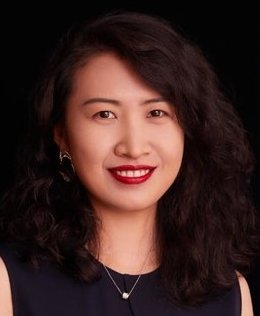
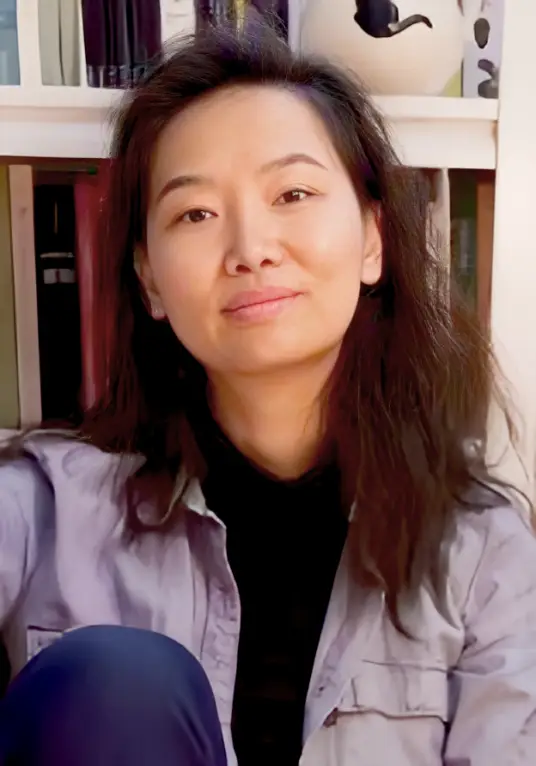








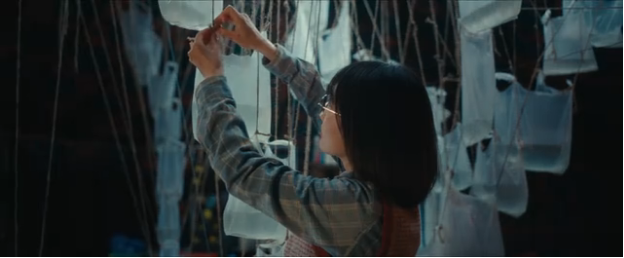


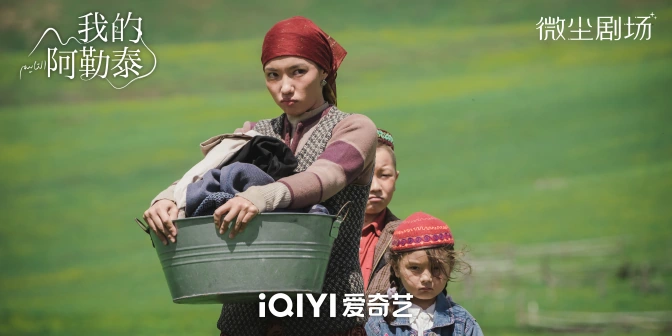
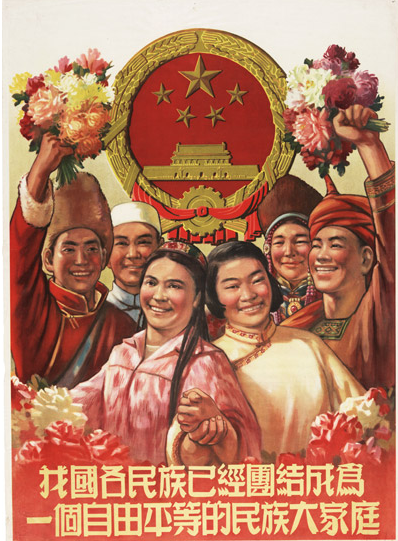




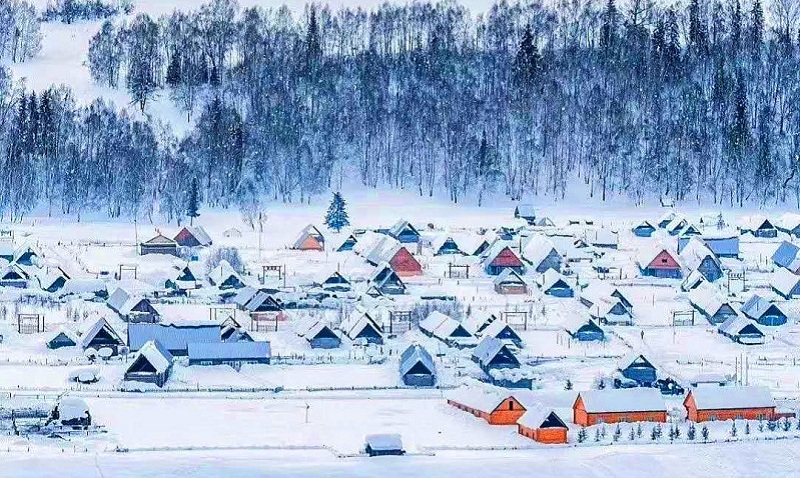
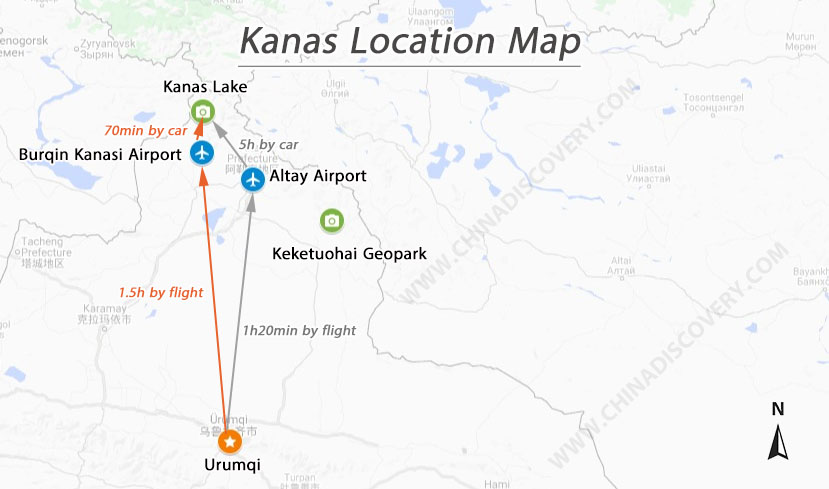
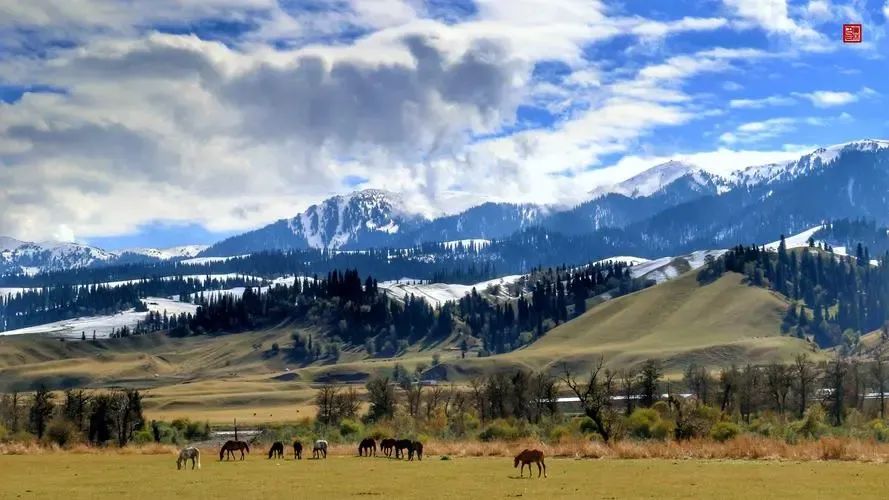

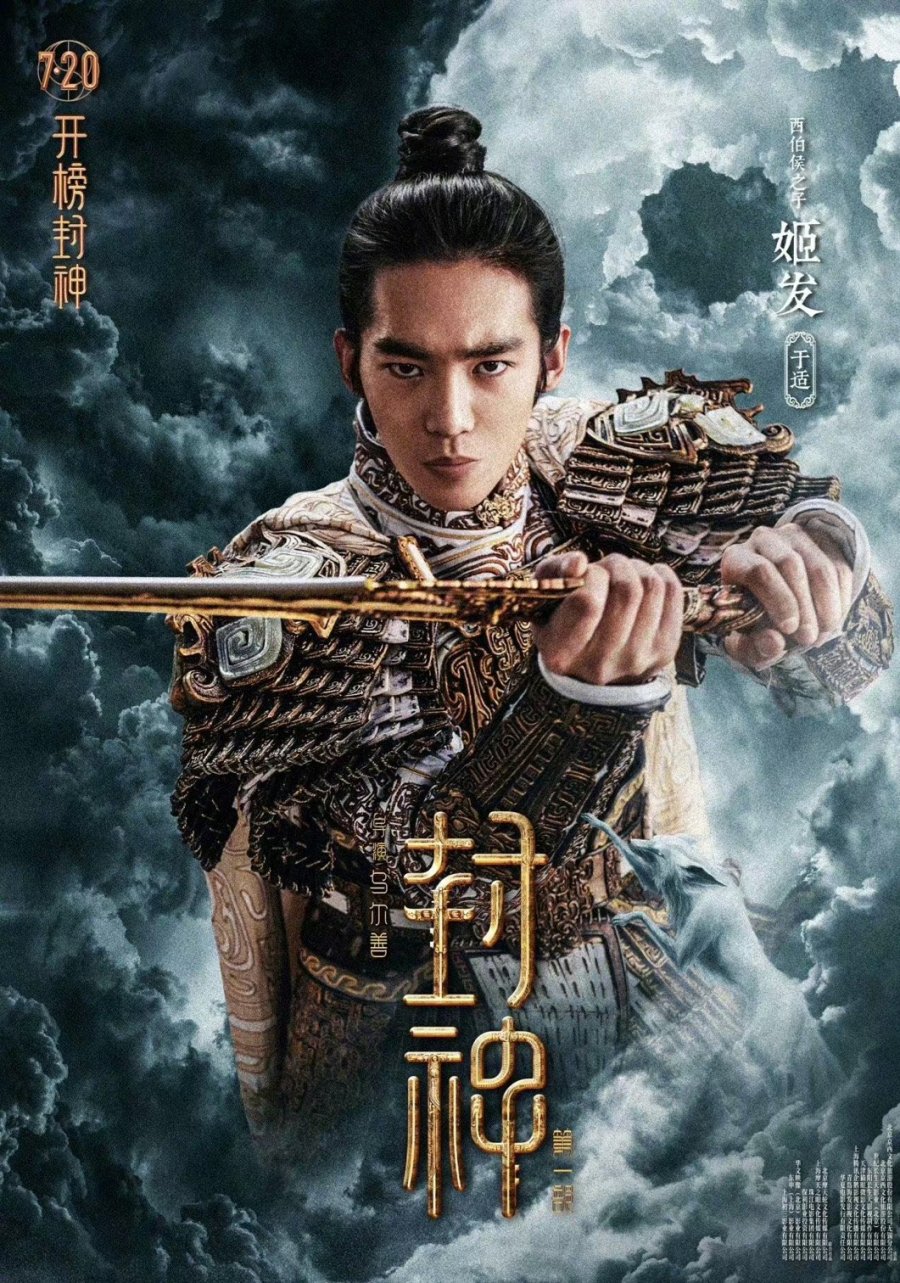


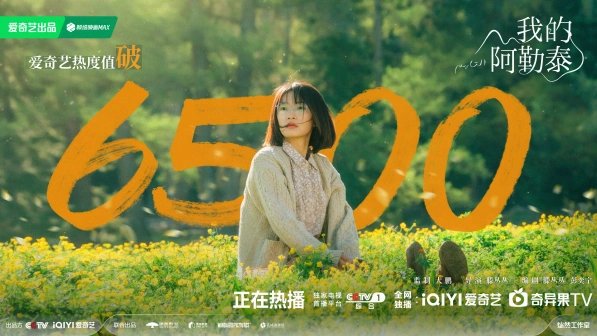


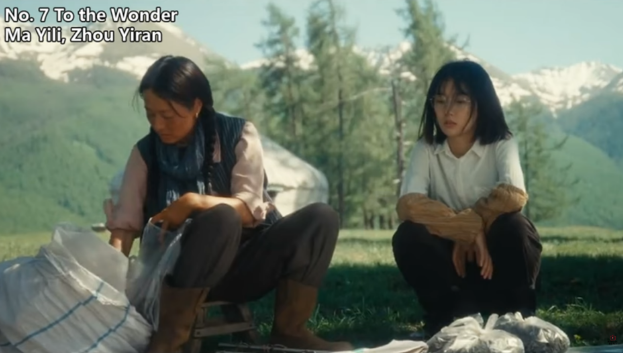





 May 16:
May 16:













